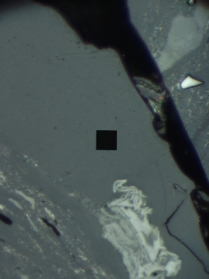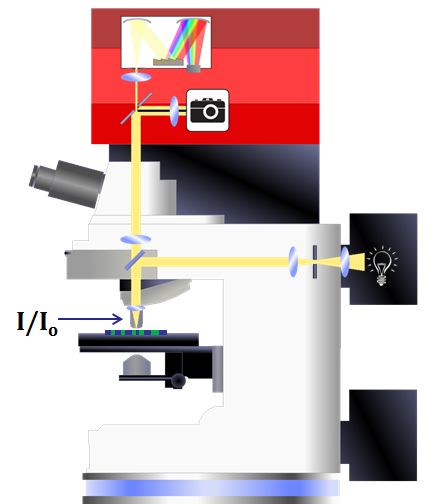Vitrinite Reflectance
Measuring the Energy Content of Coal

Coal is made up a macerals. Macerals are the organic component of coal, kerogen or other petroleum source rocks. Examples of macerals include vitrinite, inertinite and liptinite. Vitrinite is one of the primary components of coal, petroleum source rocks and sedimentary kerogens. Under a microscope, it has a shiny appearance and is derived from the cell-wall material or woody tissue of plants.
Since vitrinite changes predictably with heating (over geological time periods), vitrinite reflectance levels are a reliable measurement of a coal sample's thermal maturity thus its value as a source of energy. As such, methods have been developed to measure the percentage of reflected light from a coal sample and to determine the thermal maturity or rank of the coal sample and thus the energy content of that sample.
Vitrinite reflectance measurements are also used on petroleum source rocks and sedimentary kerogens to measure their thermal maturity and thus the type of petrochemicals that they contain. Reflectance values between 0.5 to 1.3% are considered optimal for these types of samples.
How to Measure Vitrinite Reflectance

The measurement of vitrinite reflectance is defined by both ISO and ASTM standards methods (as well as other national standards). ISO 7404-5 and ASTM D2798 both state that measuring the vitrinite reflectance of coal is to be done with a specially configured microscope using a calibrated photometer. The microscope is configured for incident illumination with green light where the illuminating light may be either plane-polarized or not. The reflected light intensity is measured with either a photometer, a spectrophotometer or with a digital camera fitted to the microscope.
The system is calibrated with special Vitrinite Reflectance Standards, supplied by CRAIC. The sample is then placed on the sample stage and brought into focus. Using the standard methodology, at least 100 measurements are made of the sample. This allows the user to test blends that contain coals of different ranks. From the data, the mean and standard deviation of all the readings are calculated as percent reflectance. The spread of the individual reflectance values is also plotted as a histogram. This allows the user to determine the different macerals and types of macerals in a sample. This data will give an indication of the rank of the coal sample.
For more detail on vitrinite reflectance, visit the following pages:
ISO 7404-5 Method of Determining MIcroscopically the Reflectance of Vitrinite
ASTM D2798 Standard Test Method for Microscopical Determination of the Vitrinite Reflectance of Coal 508PV™ Microscope Spectrophotometer for Vitrinite Reflectance GeoImage™ Imaging Photometer for Vitrinite Reflectance & Point Counting


